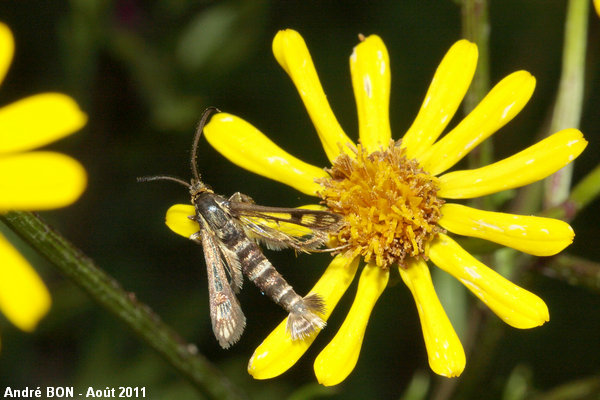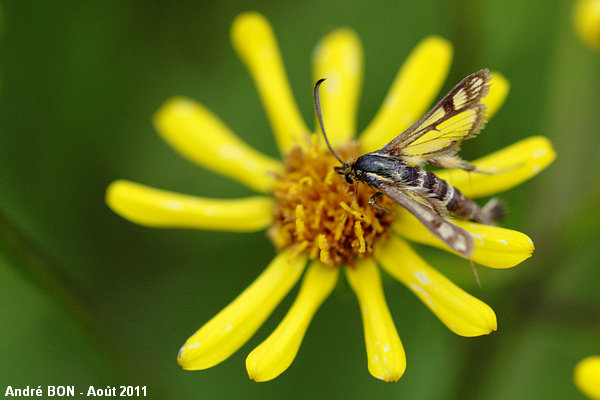

| Pyropteron sp. (Newman, 1832) |


|
|
Scientific name: Pyropteron sp. (Newman, 1832) Common name: French name: Order: Lepidoptera Suborder: Heterocera Family: Sesiidae Subfamily: Sesiinae Wingspan: 15-23mm Biotope: Presence of the host plant required. Geographic area: Flight time: May to September. Number of generations : 1 Caterpillar: Generally whitish with a brown head. Host plant: Depending on the species. |
Moths of the Sesiidae family have the particularity to show transparent areas on their narrow wings, so they are called clearwing moths. They show a long abdomen ending with a tuft of hairs and sometimes circled with red, yellow or black. They have threadlike antennae with a thickened tip. They resemble wasps or hornets. They fly during the day. Males are attracted to the pheromones emitted by females. You can get synthetic pheromones to attract males and observe them. There are 57 species in France, including 7 of the Pyropteron genus. There are the Fiery Clearwing (Pyropteron chrysidiformis), Pyropteron leucomelaena, Pyropteron affinis, Pyropteron triannuliformis, Pyropteron meriaeformis, Pyropteron hispanica and Pyropteron muscaeformis. The Fiery Clearwing is the only one you can tell apart with a picture. I have not found either any criteria to tell the Pyropteron genus apart except asking to an expert (additional information is welcome). Caterpillars grow inside roots, stems or trunks of plants. The identification of the host plant is a useful information to tell the clearwing moth species apart. |
| [To know more about the Pyropteron sp.] [Next picture] [Top] |

|
If there has no doubt about the Sesiidae family, I had to ask to an expert to try to see if you can tell more. He has indicated Pyropteron sp. to me. |
| [To know more about the Pyropteron sp.] [Previous picture] [Top] |

|
I have quickly shot two pictures to be sure to have one, but I have not been able to shoot any more because this clearwing moth rapidly flew away to other flowers in the far. |